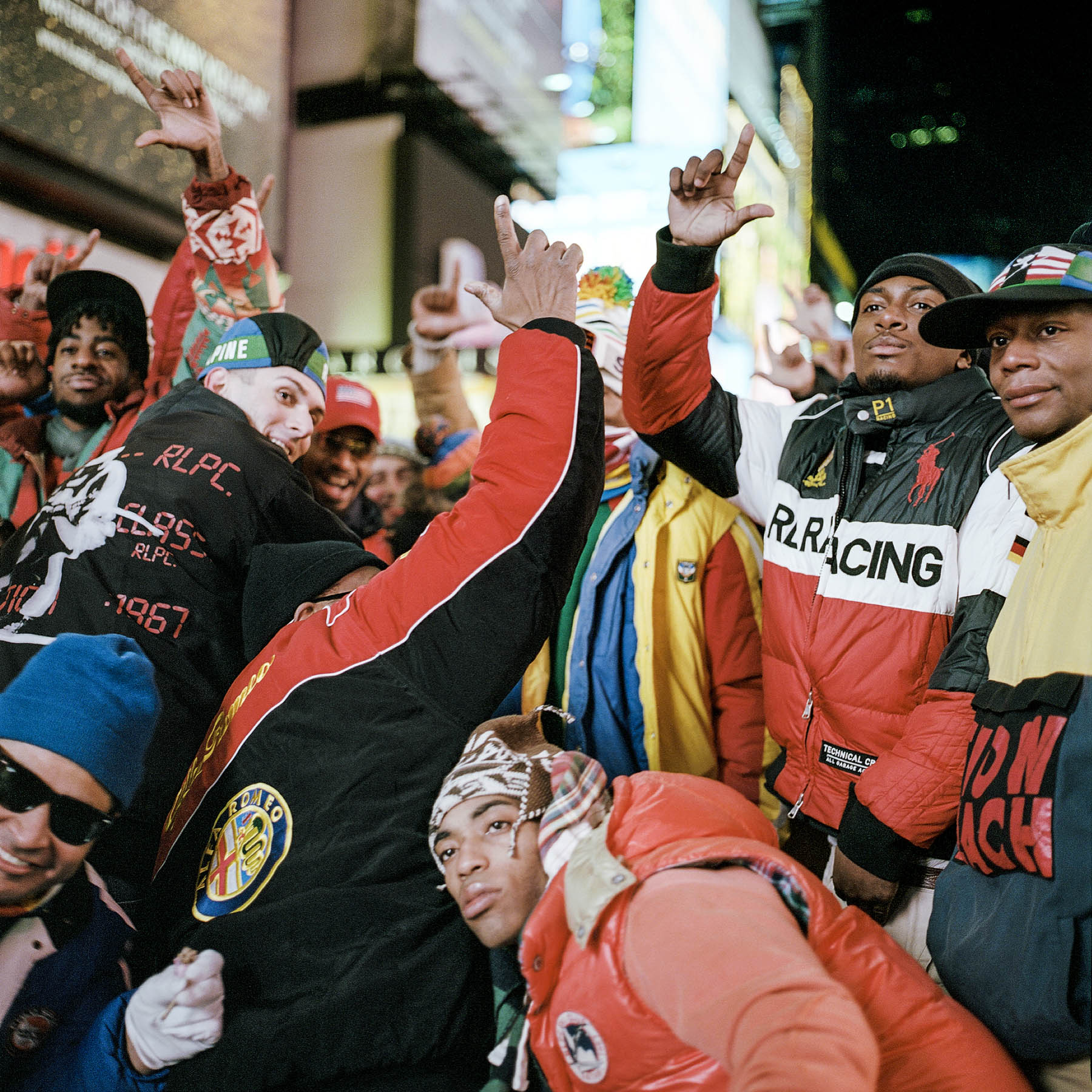Head to toe Polo continues to be a must have for Lo-Life member
When one of the most celebrated American designers, Ralph Lauren, debuted Polo in 1967, his intention was not to cater for the hip-hop community. This is apparent after a quick look through catalogues from the brand’s formative years, which show affluent-looking white men and their sons in country clubs, on golf courses, at ski resorts and on yachts, sporting the expensive sportswear. It was very far from the African-American demographic.
Then, in 1987, as if out of nowhere, a crew of teenagers in Brooklyn, New York, took over the moneyed white scene and adopted Polo Sport as their own. In New York, before gentrification, Times Square was going as Forty Deuce, a playground for peep shows, crack pushers, sex workers and get-rich-quick petty criminals looking for a short-cut to wealth.
In Complex’s documentary, Horse Power, we are introduced to one such crew, who rose to fame as the head-to-toe, walking and talking, hip-hop mannequins for Polo Sport, collectively known as the Lo-Lifes — the flagrant teenagers who gave Polo street cred and immortality.
Horse Power opens with a sequence of short living-room and studio scenes, which introduce us to the array of voices, including image activist Michaela Angela Davis, members of the original Lo-Life crew, models and department store managers, all of whom witnessed or took part in the brand’s shift from the affluent white world into the projects.
The tempo of talking heads changes when the documentary transports us to a crowded scene in Times Square in 2017 for the annual Lo Goose on the Deuce meeting. Here, Lo-Lifes from all over the world come together in their full Polo Sport regalia in colours that put the tourist destination’s many LED billboards to shame.

[At Lo Goose on the Deuce in Time Square, New York (Photo: Tom Gould)]
From then on, the fast-paced 40-minute documentary cuts between the past and present state of fashion in the urban space to interrogate pop culture’s recurring portrayal of the relationship black people have with the sartorial.
For my generation, this began while religiously watching MTV Cribs. Whenever the cameras would visit a rapper’s or R&B singer’s house, the focus would inevitably fall on their sneaker, gold chain or sportswear collections.
On the African continent, attention was first placed on Les Sapeurs, who wear expensive designer clothes despite the poverty around them. It was popularised by Papa Wemba in the 1950s on the streets of Kinshasa in the Democratic Republic of Congo. This was followed by the not-so-long-ago rise of skhothanes in South Africa.
In the same way, the film has various scenes in which hip-hop figures such as Just Blaze, 2 Chainz and Raekwon show off their large collections of Polo Sport finds. And, like the portrayals before, Horse Power speaks to a globally relevant topic by continuing to ask why we place so much value in brand name items.
Horse Power attempts to answer the question by zooming in on the stories of a few Lo-Lifes. For these teenagers, aspiring to break out of the hand-to-mouth cycle with whatever hustles they could find, the first step was to look as if they had money. Brand-name clothes were aspirational gear — it was the first step to connecting them to affluence. And because they believed Polo Sport excluded them by being marketed to a white demographic, the idea of owning what was not meant for them made it the most desirable brand.
Although the idea seemed simple, there was still the affordability factor. So they made a not-so-legal plan, which they euphemistically called “boosting sprees”. To illustrate this, the documentary cuts to CCTV footage in which groups of Lo-Lifes are seen stealing from department stores as much Polo Sport merchandise as possible in an almost choreographed, but nonviolent, manner.
The boosting sprees became a controversial topic in Ralph Lauren’s Polo merchandise meetings because, although they were affecting the brand’s profits, they were broadening its reach in a way that no marketing tool had ever been able to.
In response to this, Lauren commissioned designers and tailors to make more of what was being stolen. By the 1990s, the brand’s presence in music videos and on magazine covers and its adoption of its first African-American model, Tyson Beckford, were proof that Polo Sport was an inescapable part of urban culture.
But the documentary does not play out in a manner that positions Polo as a tool that exploits African-Americans. Instead, Davis’s explanation — “It’s colonisers’ play clothes, and all of a sudden black kids got them … the irony of that” — sums up the documentary in a way that perhaps reads as a form of ground-level protest to assert the fact that marginalised populations cannot be erased.
Horse Power highlights the significant influence that Africans and their diaspora continue to have on the direction of the sartorial world.
But the film fails to fully question the criminal act on which the Lo-Life collective was built. In addition to this, it ignores consequences, such as debt, which can come with buying into the habit of owning an excess of brand-name possessions.
Seeing that Horse Power was released earlier this year as a response to Polo Sport releasing the ’92 Stadium Series and Snow Beach Collections popularised by the Lo-Lifes in the 1980s and 1990s, perhaps the inclusion of such factors would have shifted the focus.